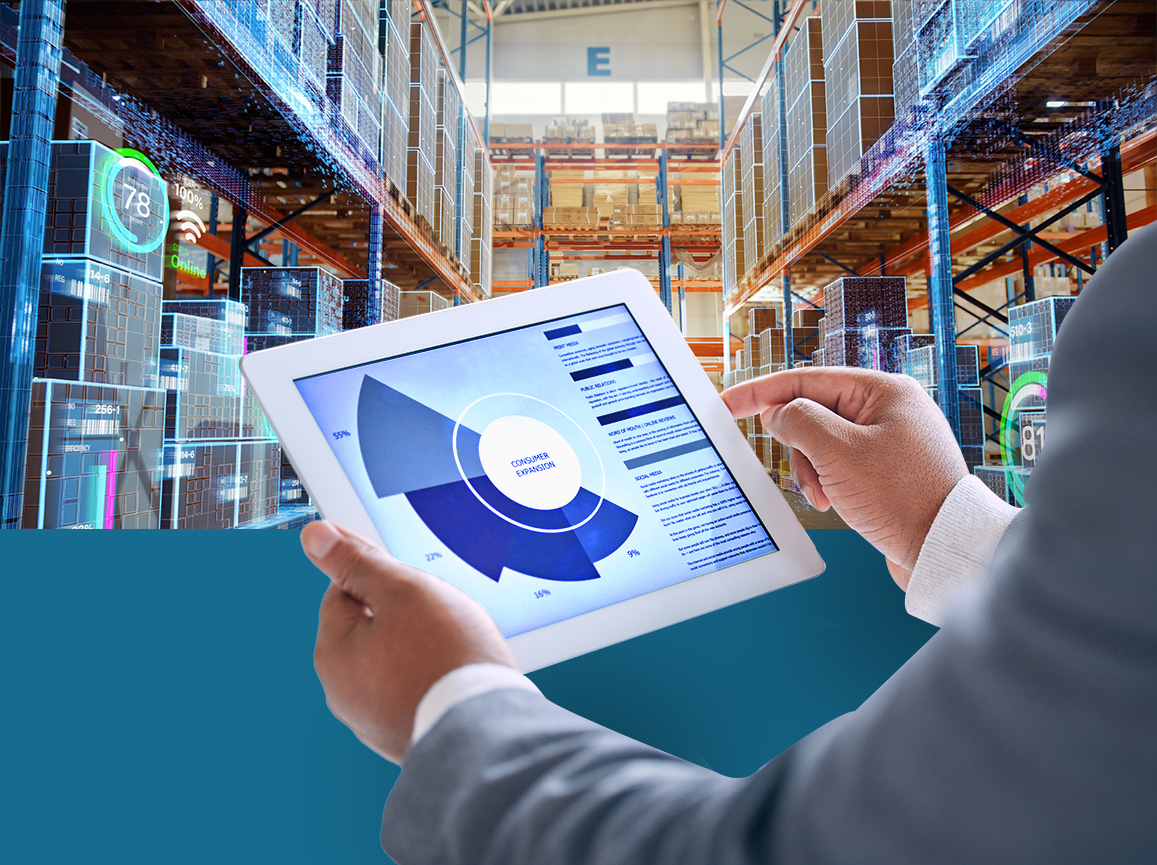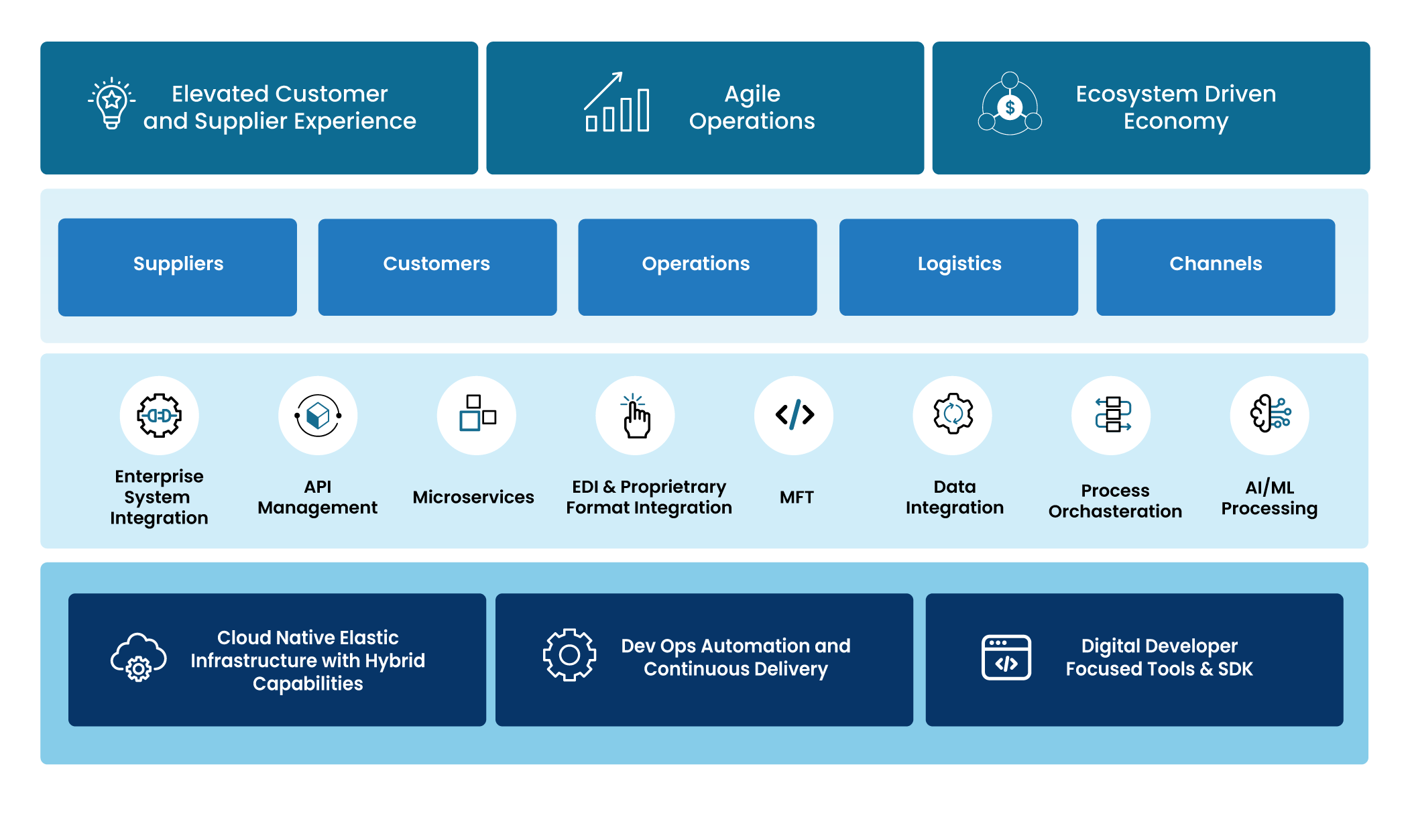These days, the industry is buzzing with excitement about the next wave of AI-enabled transformation. Agentic AI—autonomous software agents capable of making business decisions with greater autonomy—with the potential of revolutionizing supply chains and offering a competitive edge for early adopters. When realized, this level of automation will undoubtedly drive efficiency and unlock new opportunities.
But what does reality look like on the ground?
At PartnerLinQ, we routinely experience a different reality on the ground. Many companies have modernized parts of their digital ecosystem—migrating some applications to cloud-based SaaS, adopting hybrid cloud infrastructure, and strengthening security. But just moving a few applications to the cloud hasn’t solved the deeper challenges preventing businesses from executing their strategy with confidence.
Not all data is still available on time or with the accuracy needed. A lot of work still happens in siloed spreadsheets, prone to errors and inefficiencies. Cross-business data visibility remains a challenge, leading to issues like missed shipments, incomplete insights to prevent chargebacks, and difficulty tracking inventory and logistics on the move.
Collaboration outside the enterprise is another bottleneck. Partner onboarding takes too long. A patchwork of manual and automated connectivity—EDI, APIs, and other protocols—still results in incomplete, inaccurate, or delayed data sharing.
The result? A fragmented digital landscape that isn’t scalable, isn’t agile, and certainly isn’t conducive to technologies like Agentic AI delivering real value. No wonder these challenges hurt the most at the worst possible times, during critical business moments of uncertainty and volatility that demand modern, adaptable, and scalable digital state.
The gap between AI ambition and business reality is real. And to close it, companies must first tackle the foundational inefficiencies and remove digital friction that continues to hold them back. |
Case for strong digital foundation: The first step toward AI-driven automation
Modernizing this landscape isn’t optional—it’s mission-critical. Jumping into AI-driven automation without a solid foundation isn’t just difficult; it’s inefficient and unsustainable. Think of it like high-performance driving—before you can push a car to its limits, you need precise handling, proper weight distribution, and a stable chassis. The same applies to businesses. Without modern, connected systems, even the most advanced AI capabilities won’t deliver meaningful impact.
But here’s the reality: many companies are still trying to accelerate with outdated EDI and rigid supply chain systems, struggling to navigate the sharp turns of today’s business demands. These legacy bottlenecks don’t just slow things down—they create friction, limit scalability, and prevent organizations from seamlessly adopting AI-driven automation. Until companies remove these roadblocks, AI will remain more of a concept than a competitive advantage.
What’s driving digital transformation in supply chain?
We’re seeing clear trends shaping how and when companies invest in digital transformation. Over the past decade, a major shift has been moving legacy LOB applications to SaaS solutions. But there’s a growing realization—SaaS alone isn’t the answer.
It’s like swapping one set of inefficiencies for another. Instead of fragmented legacy systems, businesses now face fragmentation across multi-cloud, multi-vendor, and multiple SaaS stacks—still carrying the same costly digital drag. The challenge isn’t just modernization; it’s making sure these digital investments actually drive agility, connectivity, and business impact.
From ERP (Enterprise Resource Planning) upgrades to legacy system overhauls, organizations are increasingly recognizing the strategic importance of robust connectivity within the four walls of the enterprise and outside through API’s, EDI, market places, B2B portals and network applications. Here are some common scenarios we’ve encountered:
- ERP replacements: The adoption of modern ERP systems such as Dynamics 365, NetSuite, and SAP often requires cutting-edge, cloud-native EDI and API solutions. These platforms thrive on seamless integration and fall short of expectations in unlocking the full potential of digital transformation when connected through legacy integration approaches and tools.
- Legacy infrastructure challenges: Broken or outdated internal and external connectivity EDI can lead to significant business disruptions. When modernization from legacy integration to agile connectivity, resilient Cloud Native EDI/API infrastructures is essential to minimize disruptions, enhance reliability, and improve outcomes.
- Rapid partner onboarding: Need for simplified and highly digitalized multi-party platforms with multiple dimensions of capabilities (EDI, API, Files, Custom) to speed up multi-party access, connectivity that can drive collaboration with speed and precision.
- Resilience and scalability: Need for moving to cloud-native EDI/API based B2B interchange platforms are designed to grow with businesses, ensuring stability and performance.
- Error reduction: Out of control situation which lowers B2B/B2C customer satisfaction and increasing chargebacks resulting in direct impact on business outcomes.
- Cross-enterprise process visibility: Lack of unified monitoring leaving businesses without insights into transaction flows, process performance metrics, and ability to determine root-causes for eliminating recurring issues in time.
Building the path to AI-driven automation: The case for holistic digital connectivity
The future of AI-driven automation isn’t just about adopting new technologies; it’s about laying the right foundation today. Businesses must create a seamless, connected digital ecosystem—across systems, data, and processes—if they want to truly unlock AI’s potential. Without a unified, modern digital foundation, AI won’t be able to deliver the results it promises.
Progressive companies are already making smart investments in this holistic digital approach. By modernizing legacy systems, embracing cloud-native solutions, and ensuring seamless connectivity through APIs, EDI, and other network applications, they are setting themselves up for success. They understand that these investments aren’t just about solving current inefficiencies, they’re about paving the way for AI-enabled automation to thrive in the future.
The reality is simple: without an integrated digital framework, AI will struggle to provide meaningful value. It needs consistent, real-time data to make autonomous decisions that drive operational efficiency and innovation. Companies who build this connected foundation today are positioning themselves to fully capitalize on AI’s transformative power tomorrow. |
For those looking to truly leverage and scale the use of AI across the enterprise, the time to act is now. By eliminating the digital friction that holds them back, businesses are laying the groundwork for a future where AI doesn’t just enhance operations—it drives them. The transition to AI-driven automation isn’t a distant goal but a natural progression for those who invest in the right digital foundation today.
Powering the future of connectivity with PartnerLinQ
What PartnerLinQ brings to the table isn’t just a cloud hosted EDI solution—it’s a comprehensive cloud native platform for supply chain digital connectivity inclusive of EDI/API and with built in Supply Chain AI and visibility that is beyond run-of-the-mill integration. It combines visibility, adaptability, and operational intelligence, all in a unified business cloud platform as a service that is tailored to unique needs of industries.

Jawad Khan, CEO & Founder, PartnerLinQ Inc.
Jawad Khan is the founder and CEO of PartnerLinQ. As the innovative force behind PartnerLinQ, Jawad guides the company in reshaping digital connectivity and collaborative intelligence within the extensive supply chain sector. His leadership philosophy is deeply rooted in ensuring that supply chains are not merely reactive but strategically positioned to respond to perpetual shifts in business demands swiftly and efficiently.
 PartnerlinQ
PartnerlinQ




























